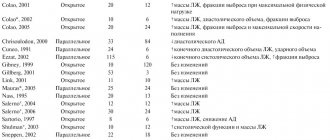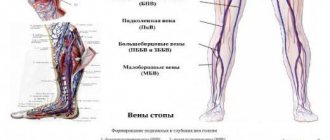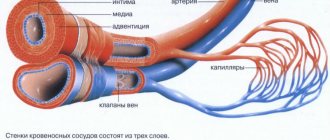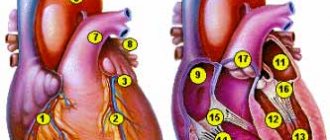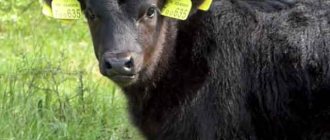Mister Diafuarus
“He is firm in argument, unshakable in his views, never changes his judgments ... he blindly believes our ancient teachers and does not even want to hear about the so-called discoveries of our century regarding blood circulation and the like.” of Moliere’s “The Imaginary Invalid”, Doctor Diafuarus, praised the virtues of a doctor It was precisely this position that the outstanding researcher of the human body, William Harvey (1578–1657), had to face when he first published his essay on the movement of the heart and blood.
Article on the topic How does the human circulatory system work? Infographics
The scientist had to come to grips with the then dominant traditional view, based on the teachings of the great physician of Antiquity, Galen . The passionate and heated discussion about blood circulation went far beyond the circle of specialists. The Paris Faculty of Medicine, whose professors unwaveringly adhered to the teachings of Galen, declared real war on Harvey.
Systemic circulation
So, let's start with the heart, or rather, with its left ventricle.
From the left ventricle of the heart, blood enters the main artery of our body - the aorta. And this is the beginning of a large circle of blood circulation.
The blood then spreads through smaller arteries up to the capillaries.
Reaching the smallest arteries, the blood leaves the arterial part of the systemic circulation and passes into a network of small capillaries.
Capillaries
Here the blood flow slows down sharply, which creates optimal conditions for the exchange of substances between the blood and the cell. And this exchange occurs quite intensively: the cell receives oxygen and nutrients and releases carbon dioxide and its metabolic products into the blood.
Blood swirls
Followers of the “ancient teacher” Galen believed that the arteries contain little blood and a lot of air, while the veins are filled with blood. It would seem, where did this belief come from? After all, with any injury that affects an artery, blood flows! This has been known since ancient times, and was also observed during ancient sacrifices. But doctors had a different picture. They relied on data obtained from autopsies. And in a dead body, the arteries are bloodless, while the veins are full. And this picture prevented a correct understanding of the problem. Therefore, nothing was known about blood circulation. It was believed that blood was formed in the liver and from there through the greater vena cava it entered the heart.
William Harvey. Photo: Commons.wikimedia.org
Known for his skepticism even in his student years, Harvey wrote: “When I first turned all my thoughts and desires to observations based on vivisections (to the extent that I had to do them), so that through my own contemplations, and not from books and manuscripts, to recognize the meaning and benefits of cardiac movements in living beings, I discovered that this question is very complex and full of mysteries at every step.” The scientist came to his conclusion through numerous experiments, when he studied the still beating hearts and lungs of dissected animals.
Harvey made this great discovery in 1616, when he said in one of his lectures that “the blood circles in the body.” However, for many years he continued to search and accumulate evidence. And only twelve years later he finally published the results of his work: “Anatomical studies on the movement of the heart and blood of animals.”
Accusations of vivisection - experiments involving the dissection of living animals - continue to haunt his reputation to this day. However, everything he did, he did for the sake of science. The burning candle on William Harvey's coat of arms symbolized "life consumed by flame, yet luminous."
One chance in a hundred. Who was saved by the first blood transfusion? More details
OPENING OF BLOOD CIRCULATION
In 1623, Pietro Sarpi, a widely educated Venetian monk who had a share in the opening of venous valves, died. Among his books and manuscripts they found a copy of an essay on the movement of the heart and blood, published in Frankfurt only five years later. It was the work of William Harvey, a student of Fabrizio.
Harvey is one of the outstanding researchers of the human body. He greatly contributed to the fact that the medical school in Padua acquired such great fame in Europe. In the courtyard of the University of Padua you can still see Harvey's coat of arms, mounted above the door to the hall in which Fabrizio gave his lectures: two snakes of Aesculapian entwined around a burning candle. This burning candle, chosen by Harvey as a symbol, depicted life consumed by flame, but nevertheless shining.
William Harvey (1578-1657)
Harvey discovered a large circle of blood circulation, through which blood from the heart passes through the arteries to the organs, and from the organs through the veins returns to the heart - a fact that today is taken for granted by everyone who knows even a little about the human body and its structure. However, for that time it was a discovery of extraordinary importance. Harvey is of the same importance to physiology as Vesalius is to anatomy. He was met with the same hostility as Vesalius, and just like Vesalius, he gained immortality. But having lived to a more advanced age than the great anatomist, Harvey turned out to be happier than him - he died in the light of glory.
Harvey also had to fight the traditional view, expressed by Galen, that the arteries allegedly contain little blood, but a lot of air, while the veins are filled with blood.
Every person of our time has a question: how could it be assumed that the arteries do not contain blood? After all, with any injury that affected the arteries, a stream of blood flowed from the vessel. Animal sacrifices and slaughter also indicated that there was blood flowing in the arteries, and even quite a lot of blood. However, we must not forget that scientific views were then determined by observational data on the corpses of dissected animals and rarely on human corpses. In a dead body, as every first-year medical student can confirm, the arteries are narrowed and almost bloodless, while the veins are thick and filled with blood. This bloodlessness of the arteries, which occurs only with the last beat of the pulse, prevented a correct understanding of their significance, and therefore nothing was known about blood circulation. It was believed that blood is formed in the liver - in this powerful and blood-rich organ; through the large vena cava, the thickness of which could not fail to catch the eye, it enters the heart, passes through the thinnest openings - pores (which, however, no one has ever seen) - in the heart septum from the right heart chamber to the left and from here goes to the organs . In the organs, it was taught at that time, this blood is consumed and therefore the liver must constantly produce new blood.
As early as 1315, Mondino de Liuzzi suspected that this view was not true and that blood from the heart also flows to the lungs. But his assumption was very vague, and it took more than two hundred years to say a clear and distinct word about it. It was said by Servetus, who deserves to say something about him.
Miguel Servetus (1511-1553)
Miguel Servetus (actually Serveto) was born in 1511 in Villanova in Spain; his mother was from France. He received his general education in Zaragoza and his legal education in Toulouse, France (his father was a notary). From Spain, a country over which the smoke of the fires of the Inquisition hung, he found himself in a country where it was easier to breathe. In Toulouse, the mind of a seventeen-year-old youth was filled with doubts. Here he had the opportunity to read Melanchthon and other authors who rebelled against the spirit of the Middle Ages. Servetus sat for hours with like-minded people and peers, discussing individual words and phrases, doctrines and various interpretations of the Bible. He saw the difference between what Christ taught and what sophistry and despotic intolerance turned this teaching into.
He was offered the position of secretary to the confessor of Charles V, which he willingly accepted. Thus, together with the court, he visited Germany and Italy, witnessed celebrations and historical events and met the great reformers - Melanchthon, Martin Bucer, and later Luther, who made a huge impression on the fiery young man. Despite this, Servetus became neither a Protestant nor a Lutheran, and disagreement with the dogmas of the Catholic Church did not lead him to the Reformation. He, striving for something completely different, read the Bible, studied the history of the emergence of Christianity and its unfalsified sources, trying to achieve the unity of faith and science. Servetus did not foresee the dangers this could lead to.
Reflections and doubts closed his way anywhere: he was a heretic both for the Catholic Church and for the reformers. Everywhere he met ridicule and hatred. Of course, such a person had no place at the imperial court, and even more so he could not remain the secretary of the emperor’s confessor. Servet chose a restless path, never to leave it again. At the age of twenty, he published an essay in which he denied the trinity of God. Then Bucer also said: “This atheist should be cut into pieces and his entrails should be torn out of his body.” But he did not have to see his wish come true: he died in 1551 in Cambridge and was buried in the main cathedral. Later, Mary Stuart ordered his remains to be removed from the coffin and burned: for her he was a great heretic.
Servetus printed the said work on the Trinity at his own expense, which consumed all his savings. His family abandoned him, his friends disowned him, so he was glad when he finally got a job under an assumed name as a proofreader for a Lyon printer. The latter, pleasantly impressed by his new employee’s good knowledge of Latin, instructed him to write a book about the Earth, basing it on Ptolemy’s theory. This is how a hugely successful work was published, which we would call comparative geography. Thanks to this book, Servetus met and became friends with the Duke of Lorraine’s physician, Doctor Champier. This Doctor Champier was interested in books and was himself the author of several books. He helped Servetus find his true calling - medicine and forced him to study in Paris, probably giving him the means for this.
A stay in Paris allowed Servetus to meet the dictator of the new faith, Johann Calvin, who was two years older than him. Calvin punished anyone who disagreed with his views with hatred and persecution. Servetus later also became his victim.
After completing his medical education, Servetus briefly practiced medicine, which could have brought him a piece of bread, peace of mind, confidence in the future and universal respect. For some time he practiced in Charlier, located in the fertile Loire Valley, but, fleeing persecution, was forced to return to the proofreading room in Lyon. Here fate extended a saving hand to him: none other than the Archbishop of Vienne took the heretic to his place as a physician, thereby providing him with protection and conditions for quiet work.
For twelve years Servetus lived quietly in the archbishop's palace. But the peace was only external: the great thinker and skeptic was haunted by inner restlessness; a prosperous life could not extinguish the inner fire. He continued to think and search. Inner strength, or perhaps just gullibility, prompted him to tell his thoughts to the one from whom they should have caused the greatest hatred, namely Calvin. The preacher and head of the new faith, his own faith, was sitting in Geneva at that time, ordering the burning of everyone who contradicted him.
It was a most dangerous, or rather, suicidal step - to send manuscripts to Geneva in order to dedicate a person like Calvin to what a person like Servetus thinks about God and the church. But not only that: Servetus sent Calvin his own work, his main work, with his appendix, in which all his errors were clearly and thoroughly listed. Only a naive person could think that it was only about scientific disagreements, about a business discussion. Servetus, pointing out all of Calvin's mistakes, hurt him and irritated him to the limit. This was precisely the beginning of the tragic end of Servetus, although another seven years passed before the flames closed over his head. To end the matter peacefully, Servetus wrote to Calvin: “Let us go our separate ways, return my manuscripts to me and farewell.” Calvin, in one of his letters to his like-minded person, the famous iconoclast Farel, whom he managed to win over to his side, says: “If Servetus ever visits my city, I will not let him out alive.”
The work, part of which Servetus sent to Calvin, was published in 1553, ten years after the first edition of Vesalius' anatomy. The same era gave birth to both of these books, but how fundamentally different they are in their content! “Fabrika” by Vesalius is a doctrine of the structure of the human body, corrected as a result of the author’s own observations, a denial of Galenic anatomy. The work of Servetus is a theological book. He called it “Cristianismi restitutio...”. The whole title, in accordance with the tradition of that era, is very long and reads as follows: “The Restoration of Christianity, or the appeal to the whole Apostolic Church to return to its own beginnings, after the knowledge of God, faith in Christ our redeemer, regeneration, baptism, and eating the food of the Lord, and after the kingdom of heaven is finally opened for us again, deliverance from godless Babylon will be granted, and the enemy of man and his companions will be destroyed.”
This work was polemical, written in refutation of the dogmatic teaching of the church; it was secretly printed in Vienne, knowingly doomed to be banned and burned. However, three copies still escaped destruction; one of them is kept in the Vienna National Library. For all its attacks on dogma, the book professes humility. It represents a new attempt by Servetus to combine faith with science, to adapt the human to the inexplicable, the divine, or to make the divine, that is, stated in the Bible, accessible through scientific interpretation. In this work about the restoration of Christianity, quite unexpectedly, a very remarkable passage appears: “To understand this, you must first understand how the vital spirit is produced... The vital spirit originates in the left heart ventricle, and the lungs provide special assistance to the production of the vital spirit, since there the air entering them is mixed with blood coming from the right heart ventricle. This path of blood, however, does not at all run through the septum of the heart, as is commonly believed, but the blood is extremely skillfully driven by another route from the right heart ventricle to the lungs... Here it mixes with the inhaled air, while when exhaled, the blood is freed from soot.” (here carbon dioxide is implied). “After the blood is well mixed through the breathing of the lungs, it is finally drawn back into the left heart ventricle.”
It is not known how Servetus came to this discovery - through observations on animals or on people: what is certain is that he was the first to clearly recognize and describe the pulmonary circulation, or the so-called pulmonary circulation, i.e. the path of blood from the right side of the heart to the lungs and from there back to the left side of the heart. But only a few doctors of that era paid attention to the extremely important discovery, thanks to which Galen’s idea of the passage of blood from the right ventricle to the left through the heart septum relegated to the realm of myths, from where it came. This, obviously, should be attributed to the fact that Servetus presented his discovery not in a medical, but in a theological work, moreover, in one that was diligently and very successfully searched for and destroyed by the servants of the Inquisition.
The isolation from the world characteristic of Servetus and a complete lack of understanding of the seriousness of the situation led to the fact that during his trip to Italy he stopped in Geneva. Did he assume that he would pass through the city undetected, or did he think that Calvin's anger had long cooled down?
Here he was captured and thrown into prison and could no longer expect mercy. He wrote to Calvin, asking him for more humane conditions of imprisonment, but he did not know pity. “Remember,” said the answer, “how sixteen years ago in Paris I tried to persuade you to our Lord! If you had come to us then, I would have tried to reconcile you with all the good servants of the Lord. You poisoned and blasphemed me. Now you can beg for mercy from the Lord whom you reviled, wanting to overthrow the three beings embodied in him - the trinity.”
The verdict of the four highest church authorities that then existed in Switzerland, of course, coincided with the verdict of Calvin: he proclaimed death by burning and was carried out on October 27, 1553. It was a painful death, but Servetus refused to renounce his beliefs, which would have given him the opportunity to achieve a more lenient execution.
However, in order for the pulmonary circulation discovered by Servetus to become the common property of medicine, it had to be rediscovered. This secondary discovery was made several years after the death of Servetus by Realdo Colombo, who headed the department in Padua, which was previously in charge of Vesalius.
William Harvey was born in 1578 in Folkestone. He took an introductory course in medicine at Caius College, Cambridge, and in Padua, the center of attraction for all physicians, he received a medical education corresponding to the level of knowledge of that time. Even as a student, Harvey was distinguished by the sharpness of his judgments and critical-skeptical remarks. In 1602 he received the title of doctor. His teacher Fabrizio could be proud of a student who, just like him, was interested in all the big and small secrets of the human body and, even more than the teacher himself, did not want to believe what the ancients taught. Everything must be explored and rediscovered - this was Harvey's opinion.
Returning to England, Harvey became professor of surgery, anatomy and physiology in London. He was physician to Kings James I and Charles I, accompanying them on their travels and during the Civil War of 1642. Harvey accompanied the court on its flight to Oxford. But the war came here with all its unrest and Harvey had to give up all his positions, which, however, he did willingly, since he wanted only one thing: to spend the rest of his life in peace and tranquility, doing books and research.
A gallant and elegant man in his youth, Harvey became calm and modest in his old age, but he was always an extraordinary person. He died at the age of 79, a balanced old man, looking at the world with the same skeptical gaze with which he had looked at the theories of Galen or Avicenna.
In the last years of his life, Harvey wrote an extensive work on embryological research. It was in this book, dedicated to the development of animals, that he wrote the famous words - “ornne vivum ex ovo” (“everything living from the egg”), which captured the discovery that has dominated biology ever since in the same formulation.
But it was not this book that brought him great fame, but another, much smaller one - a book on the movement of the heart and blood: “Exercitatio anatomica de motu cordis et sanguinis in animalibus” (“Anatomical study on the movement of the heart and blood in animals”). It was published in 1628 and gave rise to passionate and heated discussions. A new and too unusual discovery could not help but excite minds. Harvey was able to discover through numerous experiments when he studied the still beating heart and breathing lungs of animals in order to discover the truth, a large circle of blood circulation.
Harvey made his great discovery back in 1616, since even then, in one of his lectures at the London College of Physicians, he talked about the fact that blood “circles” in the body. However, for many years he continued to search and accumulate proof after proof, and only twelve years later he published the results of his hard work.
Of course, Harvey described a lot of what was already known, but mainly what he believed pointed to the right path in the search for truth. And yet he owes the greatest merit to the knowledge and explanation of blood circulation in general, although he did not notice one part of the circulatory system, namely the capillary system - a complex of thin, hair-like vessels that are the ends of the arteries and the beginning of the veins.
Jean Riolan the Younger, professor of anatomy in Paris, head of the medical faculty and royal physician, led the fight against Harvey. This turned out to be serious opposition, since Riolan was, indeed, a major anatomist and an outstanding scientist who enjoyed great authority.
But gradually the opponents, even Riolan himself, fell silent and admitted that Harvey had succeeded in making one of the greatest discoveries concerning the human body, and that the doctrine of the human body had entered a new era.
Harvey's discovery was most fiercely contested by the Paris Faculty of Medicine. Even a hundred years later, the conservatism of the doctors of this faculty was still the subject of ridicule by Rabelais and Montaigne. Unlike the freer atmosphere of the Montpellier school, the faculty, in its rigid adherence to tradition, adhered unswervingly to the teachings of Galen. What could these gentlemen, proudly speaking in their precious uniforms, know about the calls of their contemporary Descartes to replace the principle of authority with the rule of human reason!
The discussion about blood circulation has gone far beyond the circles of specialists. Moliere also took part in the fierce verbal battles, and more than once directed the severity of his ridicule against the narrow-mindedness and arrogance of the doctors of that era. Thus, in “The Imaginary Invalid,” the newly minted doctor Thomas Diafuarus gives the role to the maid Toinette: the role contains a thesis he composed, directed against supporters of the doctrine of blood circulation! Even if he was confident in the approval of this thesis by the Parisian Faculty of Medicine, he could be no less confident in the crushing, destroying laughter of the public.
Circulation, as described by Harvey, is the actual circulation of blood in the body. When the heart ventricles contract, blood from the left ventricle is pushed into the main artery, the aorta; through it and its branches it penetrates everywhere - into the leg, arm, head, into any part of the body, delivering vital oxygen there. Harvey did not know that in the organs of the body the blood vessels branch into capillaries, but he correctly pointed out that the blood is then collected again, flows through the veins back to the heart and flows through the greater vena cava into the right atrium. From there, the blood enters the right ventricle and, when the ventricles contract, it is sent through the pulmonary artery, which extends from the right ventricle, to the lungs, where it is supplied with fresh oxygen - this is a pulmonary circulation discovered by Servetus. Having received fresh oxygen in the lungs, the blood flows through the great pulmonary vein into the left atrium, from where it enters the left ventricle. After this, the systemic circulation is repeated. You just need to remember that arteries are the vessels that lead blood away from the heart (even if they, like the pulmonary artery, contain venous blood), and veins are the vessels leading to the heart (even if they, like the pulmonary vein, contain arterial blood).
Systole is the contraction of the heart; Atrial systole is much weaker than ventricular systole. The expansion of the heart is called diastole. The movement of the heart covers both the left and right sides simultaneously. It begins with atrial systole, from where blood is driven into the ventricles; then ventricular systole follows, and the blood is pushed into two large arteries - the aorta, through which it enters all areas of the body (systemic circulation), and the pulmonary artery, through which it passes to the lungs (lesser, or pulmonary, circulation). After this there is a pause, during which the ventricles and atria are dilated. Harvey basically established all this.
At the beginning of his not very voluminous book, the author talks about what exactly prompted him to this work: “When I first turned all my thoughts and desires to observations based on vivisections (to the extent to which I had to do them), in order to from my own contemplations, and not from books and manuscripts to recognize the meaning and benefits of cardiac movements in living beings, I discovered that this question is very complex and full of mysteries at every step. Namely, I could not make out exactly how systole and diastole occur. After day after day, exerting more and more effort to achieve greater accuracy and thoroughness, I studied a large number of the most diverse living animals and collected data from numerous observations, I finally came to the conclusion that I had attacked the trail that interested me and managed to get out from this labyrinth, and at the same time, as I wanted, I recognized the movement and purpose of the heart and arteries.”
The extent to which Harvey had the right to assert this is evidenced by his strikingly accurate description of the movement of the heart and blood: “First of all, in all animals, while they are still alive, one can observe, when opening their chest, that the heart first moves and then rests... Three moments can be observed in the movement: firstly, the heart rises and raises its apex in such a way that at this moment it knocks on the chest and these beats are felt from the outside; secondly, it is compressed on all sides, somewhat more so on the sides, so that it decreases in volume, stretches somewhat and wrinkles; thirdly, if you take the heart in your hand at the moment when it makes a movement, it hardens. From here it became clear that the movement of the heart consists in general (to a certain extent) tension and all-round compression in accordance with the traction of all its fibers. Corresponding to these observations is the conclusion that the heart, at the moment when it moves and contracts, narrows in the ventricles and squeezes out the blood contained in them. Hence there arises an obvious contradiction to the generally accepted belief that at the moment when the heart beats the chest, the ventricles of the heart expand, filling at the same time with blood, while one can be convinced that the situation should be just the opposite, namely, that the heart is emptied at the moment of contraction "
Reading Harvey's book, one is constantly amazed at the accuracy of the description and the consistency of the conclusions: “So nature, which does nothing without a reason, did not provide a heart to such a living being that does not need it and did not create a heart before it acquired meaning; nature achieves perfection in each of its manifestations by the fact that during the formation of any living being, it goes through the stages of formation (if I may put it this way) common to all living beings: egg, worm, embryo.” In this conclusion one can recognize an embryologist - a researcher who studies the development of the human and animal organism, who in these remarks clearly indicates the stages of development of the embryo in the womb.
Harvey is undoubtedly one of the outstanding pioneers of human science, a researcher who opened a new era of physiology. Many later discoveries in this field were significant and even extremely significant, but nothing was more difficult than the first step, that first act that crushed the edifice of error in order to erect the edifice of truth.
Of course, Harvey's system was still missing some links. First of all, the connecting part between the arterial system and the venous system was missing. How does blood, going from the heart through large and small arteries to all parts of the organs, finally enter the veins, and from there back to the heart, in order to then stock up on new oxygen in the lungs? Where is the transition from arteries to veins? This important part of the circulatory system, namely the connection of arteries with veins, was discovered by Marcello Malpighi from Crevalcore near Bologna: in 1661, in his book on the anatomical study of the lungs, he described the hair vessels, i.e. capillary circulation.
Malpighi studied the pulmonary vesicles in detail in frogs and found that the thinnest bronchioles end in pulmonary vesicles, which are surrounded by blood vessels. He also noticed that the thinnest arteries are located next to the thinnest veins, one capillary network next to another, and quite correctly assumed that the blood vessels do not contain air. He considered it possible to make this message to the public, since even earlier he had acquainted them with his discovery of a capillary network in the mesentery of the intestines of frogs. The walls of the hair vessels are so thin that oxygen easily penetrates from them to the tissue cells; The oxygen-poor blood is then sent to the heart.
Thus, the most important stage of blood circulation was discovered, which determined the completeness of this system, and no one could refute that blood circulation does not occur as Harvey described. Harvey died several years before the discovery of Malpighi. He did not have the opportunity to witness the complete triumph of his teaching.
The opening of the capillaries was preceded by the opening of the pulmonary vesicles. Here is what Malpighi writes about this to his friend Borelli: “Every day, doing autopsies with more and more diligence, I have recently been studying with particular care the structure and function of the lungs, about which, as it seemed to me, there are still rather vague ideas. I now want to tell you the results of my research, so that with your gaze, so experienced in matters of anatomy, you can separate right from wrong and effectively use my discoveries... Through diligent research, I discovered that the entire mass of the lungs, which hang on the vessels emanating from them, consists of very thin and delicate films. These films, sometimes straining and sometimes shrinking, form many bubbles, similar to the honeycombs of a hive. Their location is such that they are directly connected both to each other and to the windpipe, and form a generally interconnected film. This is best seen on lungs taken from a living animal; especially at their lower end, you can clearly see numerous small bubbles swollen with air. The same thing, although not so clearly, can be recognized in a lung cut in the middle and deprived of air. When the light falls directly on the surface of the lungs in a dissolved state, a wonderful network is noticeable, which seems closely connected with the individual bubbles; the same can be seen on the cut lung and from the inside, although not so clearly.
Typically, the lungs vary in shape and location. There are two main parts, between which is the mediastinum (Mediastinum); Each of these parts consists of two in humans, and several subdivisions in animals. I myself discovered a most wonderful and complex dissection. The total mass of the lungs consists of very small lobules, surrounded by a special kind of film and equipped with their own vessels formed from the processes of the windpipe.
To distinguish these lobules, you should hold the half-inflated lung against the light, and then the gaps will clearly appear; when air is blown through the windpipe, the lobules wrapped in a special film can be separated with small sections from the vessels touching them. This is achieved through very careful preparation.
As for the function of the lungs, I know that much that is taken for granted by old people is still very doubtful, especially the cooling of the blood, which according to the traditional view is considered the main function of the lungs; This view is based on the assumption of the presence of warmth rising from the heart, seeking an outlet. I, however, for reasons which I will discuss below, consider it most likely that the lungs are designed by nature for mixing the mass of blood. As for the blood, I do not believe that it consists of the four usually supposed liquids - both galenic substances, blood itself and saliva, but I am of the opinion that the entire mass of blood, constantly flowing through the veins and arteries and consisting of small particles, is composed from two very similar liquids - a whitish one, which is usually called serum, and a reddish one ... "
While printing his work, Malpighi arrived for the second time in Bologna, where he had already come at the age of twenty-eight as a professor. He did not meet with sympathy from the faculty, who immediately opposed the new teaching in the most harsh manner. After all, what he proclaimed was a medical revolution, a revolt against Galen; Everyone united against this, and the old people began a real persecution of the youth. This made it difficult for Malpighi to work calmly, and he changed the department in Bologna to the department in Messina, believing that he would find different conditions for teaching there. But he was mistaken, for even there he was pursued by hatred and envy. In the end, after four years, he decided that Bologna was still better and returned there. However, a change in sentiment had not yet occurred in Bologna, although the name Malpighi was already widely known abroad.
The same thing happened to Malpighi as to many others, both before him and after him: he became a prophet not recognized in his own country. The famous Royal Society of England elected him as a member, but the Bolognese professors did not consider it necessary to take this into account and continued to persecute Malpighi with unremitting persistence. Even in the audience, undignified scenes were played out. One day, during a lecture, one of his opponents appeared and began to demand that the students leave the audience; Everything, they say, that Malpighi teaches is absurd, his dissections are devoid of any value, only idiots can work in this way. There was another case that was worse. Two masked faculty professors—anatomists Muni and Sbaraglia—appeared at the scientist’s country house, accompanied by a crowd of people also wearing masks. They carried out a devastating attack: Malpighi, then an old man of 61, was beaten and his household property was destroyed. This method, apparently, did not represent anything unusual in Italy of that era, since Berengario de Carpi himself once thoroughly destroyed the apartment of his scientific opponent. This was quite enough for Malpighi. He again left Bologna and went to Rome. Here he became the pope's physician and spent the rest of his life serenely.
Malpighi's discovery, dating back to 1661, could not have been made earlier, since it was impossible to examine the thinnest blood vessels, much thinner than a human hair, with the naked eye: this required a highly magnifying system of magnifying glasses, which appeared only at the beginning of the 17th century . The first microscope in its simplest form was apparently made by a combination of lenses around 1600 by Zachary Jansen of Meddelburg in Holland. Antonie van Leeuwenhoek, this genius, considered the founder of scientific microscopy, in particular microscopic anatomy, carried out microscopic studies starting in 1673 with the help of highly magnifying lenses he himself made.
In 1675, Leeuwenhoek discovered ciliates - a living world in a drop of water from a puddle. He died in 1723 at a very old age, leaving behind 419 microscopes, with which he achieved magnification up to 270 times. He never sold a single instrument. Leeuwenhoek was the first to see the transverse striation of the muscles used for movement, the first was able to accurately describe the skin scales and internal pigment deposition, as well as the mesh weave of the cardiac muscles. Already after Jan Ham, as a student in Leiden, discovered “seed lifers,” Leeuwenhoek was able to prove the presence of seed cells in all animal species.
Malpighi was the first to discover red blood cells in the blood vessels of the human mesentery, which was soon confirmed by Leeuwenhoek, but only after these cells in the blood vessels were noticed by Jan Swammerdam in 1658.
Malpighi, who should be considered an outstanding researcher in the field of natural science, finally resolved the question of blood circulation. The three spirits, which according to previous ideas were located in the blood vessels, were expelled in order to give way to a large “spirit” - a single blood moving in a vicious circle, returning to its starting point and again completing the cycle - and so on until the end of life. The forces that force the blood to complete this cycle were already clearly known.
Related materials:
Other anatomical discoveries
Albrecht von Haller
Antoine Laurent Lavoisier
The science of embryology
Marcello, you're wrong!
According to Harvey, when the heart ventricles contract, blood is pushed into the aorta, through it and its branches it penetrates into the legs, arms, head, any part of the body, delivering vital oxygen there, then collects again and flows through the veins back to the heart. True, Harvey's system lacked some links, for example, the connecting part between the arterial system and the venous system. The capillary system - a complex of thin vessels that are the end of arteries and the beginning of veins - was discovered after the death of the scientist. This important part of the circulatory system was described by Marcello Malpighi.
Malpighi also had a hard time. One day, two faculty professors came to his country house incognito and disagreed with his discovery. The venerable anatomists were accompanied by masked people. Malpighi, who was 61 at the time, was beaten and his household belongings were destroyed. Moreover, this method of conducting scientific disputes was not something unusual in Italy at that time. For example, the outstanding figure of the Renaissance, professor at the University of Bologna, Berengario da Carpi, also once destroyed the apartment of his scientific opponent. Such was the degree of scientific discussions then.
Pulmonary circulation
From the right atrium, blood passes into the right ventricle and here the pulmonary circulation begins.
Why is the pulmonary circulation needed? What is his role?
The pulmonary circulation is necessary in order to saturate the blood with oxygen and free it from carbon dioxide.
Therefore, a rather large artery emerges from the right ventricle and rushes to the lungs.
This is the so-called pulmonary trunk.
Next, the pulmonary trunk breaks up into smaller arteries down to the capillary network.
Capillary network of the lungs.
In the lung tissue, the blood gives off carbon dioxide and receives oxygen. The exchange, of course, takes place in the capillary network.
Pulmonary veins.
Then the blood enters the veins, which gradually merge with each other to form four pulmonary veins. These veins drain into the left atrium. From the left atrium, oxygenated blood enters the left ventricle.


